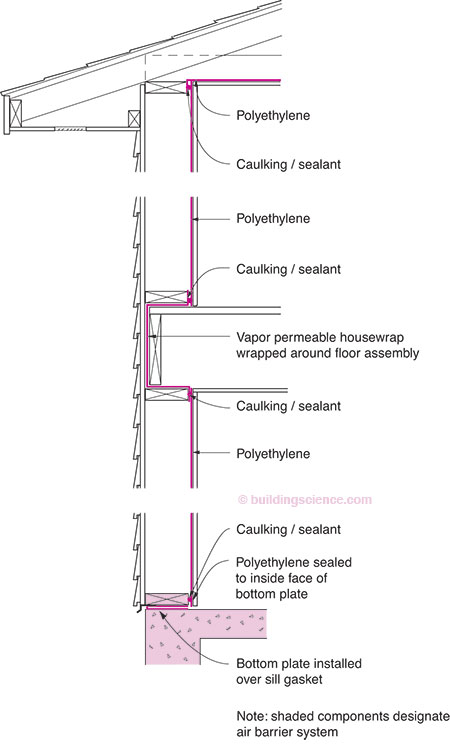Air barriers are systems of materials used to control airflow in building enclosures. They typically completely enclose the air within a building. The physical properties which distinguish air barriers from other materials are the ability to resist air flow and air pressure.
Air barriers are intended to resist the air pressure differences that act on them. Rigid materials such as gypsum board, exterior sheathing materials like plywood or OSB, and supported flexible barriers are typically effective air barrier systems if joints and seams are sealed.
Air barriers keep outside and inside air out of the building enclosure. Air barriers can be located anywhere in the building enclosure—at the exterior surface, the interior surface, or at any location in between. In heating climates, interior air barriers control the exfiltration of interior, often moisture-laden, air. Whereas exterior air barriers control the infiltration of exterior air and prevent wind-washing through insulation.
Wherever they are, air barriers should be:
• impermeable to air flow
• continuous over the entire building enclosure
• able to withstand the forces that may act on them during and after construction
• durable over the expected lifetime of the building
Air barriers define the location of the pressure boundary of the building enclosure. The pressure boundary is defined as the location where 50 percent or more of the air pressure drop across an assembly occurs.
The air barrier and pressure boundary are the primary air enclosure boundary that separates indoor (conditioned) air and outdoor (unconditioned) air.
Indoor air is air in a conditioned space. A conditioned space is the part of the building that is designed to be thermally conditioned for the comfort of occupants or for other occupancies or for other reasons. The air barrier and the pressure boundary also separate the conditioned air from any given unit and adjacent units in townhouse, condominium and apartment construction.
In this regard, the air barrier and the pressure boundary are also the fire barrier and smoke barrier in inter-unit separations. In such assemblies the air barrier and pressure boundary must also meet the specific fire resistance rating requirement for the given separation.
The air barrier and pressure boundary also separate garages from conditioned spaces. In this regard an air barrier is also the "gas barrier" and provides the gas-tight separation between a garage and the remainder of the house.
Air retarders are different from air barriers. Air retarders are materials or systems that reduce airflow or control airflow but do not resist 5 percent or more of the air pressure drop across an assembly.
Four common approaches are used to provide air barriers in residential buildings:
• interior air barrier using drywall and framing
• interior air barrier using polyethylene
• exterior air barrier using exterior sheathing
• exterior air barrier using housewraps
Some spray applied foam insulations can be used as interstitial (cavity) air barriers, notably polyurethane foams. Typically applied damp spray cellulose is not an effective interstitial air barrier — rather it is an air retarder.
An advantage of interior air barriers over exterior systems is that they control the entry of interior moisture-laden air into assembly cavities during heating periods. The significant disadvantage of interior air barriers is their inability to control wind-washing through cavity insulation.
The significant advantage of exterior air barriers is the ease of installation and the lack of detailing issues due to intersecting partition walls and service penetrations. However, exterior air barriers must deal with transitions where roof assemblies intersect exterior walls. For example, an exterior housewrap should be sealed to the ceiling air barrier system across the top of the exterior perimeter walls.
An additional advantage of exterior air barrier systems is the control of wind-washing that an exterior air seal provides. The significant disadvantage of exterior air barriers is their inability to control the entry of air-transported moisture into cavities from the interior.
Installing both interior and exterior air barriers addresses the weakness of each.
Air barriers can also be provided with properties which also class them as vapor barriers. An example of this is polyethylene film which can be used as both an air barrier and a vapor barrier.
Keep in mind, however, polyethylene on the inside of building assemblies in cold, mixed-humid, marine, hot-dry and hot-humid climates is not generally a good idea; drying of building assemblies in these climates occurs to the inside as well as to the outside.
Interior drying is typically necessary in air conditioned enclosures. In other words, interior vapor barriers such as polyethylene should never be installed in an air conditioned building — even one located in very cold climate.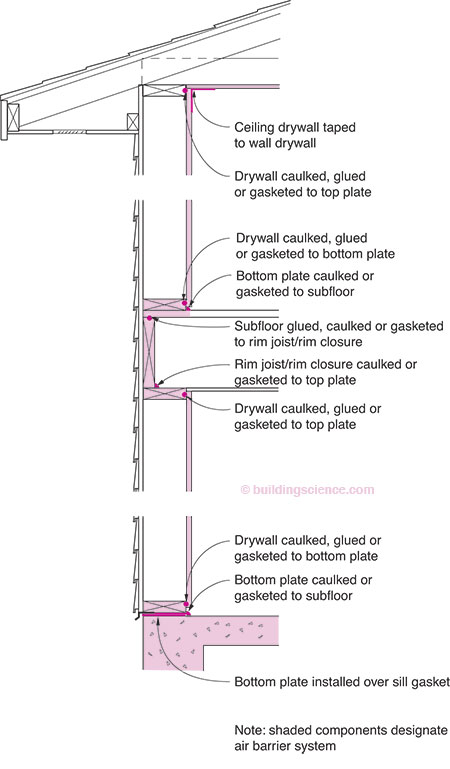
Figure 1: Interior Air Barrier Using Drywall and Framing—Air Drywall Approach (ADA)
Figure 2: Interior Air Barrier Using Polytethyene—This approach is not recommended for cold, mixed-humid, marine, mixed-dry or hot-dry climates due to the impermeability of the polyethylene; recommended for very cold climates only in non-air conditioned buildings
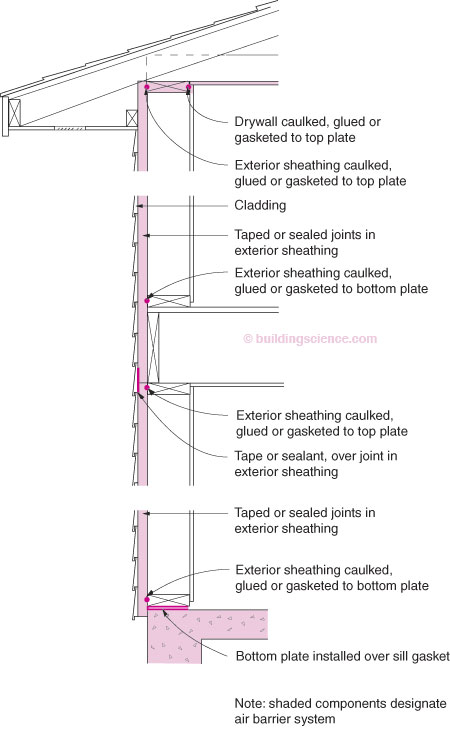
Figure 3: Exterior Air Barrier Using Exterior Sheathing
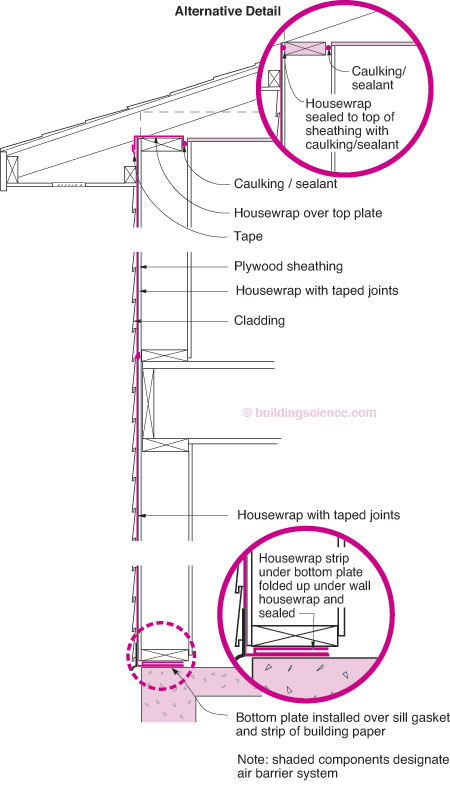
Figure 4: Exterior Air Barrier Using Housewrap—Polyethylene in ceiling is part of the air barrier system
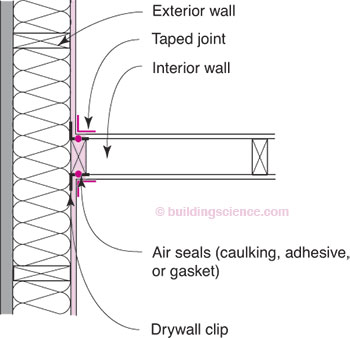
Figure 5: Intersection of Interior Partition Wall and Exterior Wall—Air Drywall Approach (ADA)-interior air barrier; seal drywall to framing at partition wall
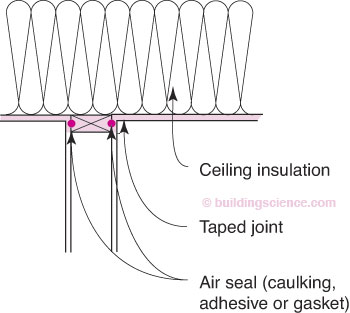
Figure 6: Intersection of Interior Partition Wall and Insulated Ceiling—Air Drywall Approach (ADA)-interior air barrier; seal drywall to framing top plate
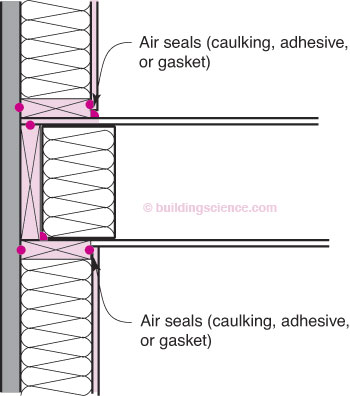
Figure 7: Intersection of Floor Joists and Exterios Wall—Air Drywall Approach (ADA)-interior air barrier
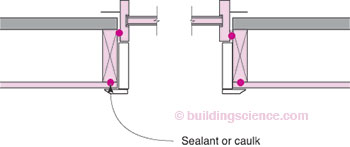
Figure 8: Windwo Jamb with Wood Trim—Air Drywall Approach (ADA)-interior air barrier

Figure 9: Window Jamb with Drywall Returns—Air Drywall Approach (ADA)-interior air barrier

